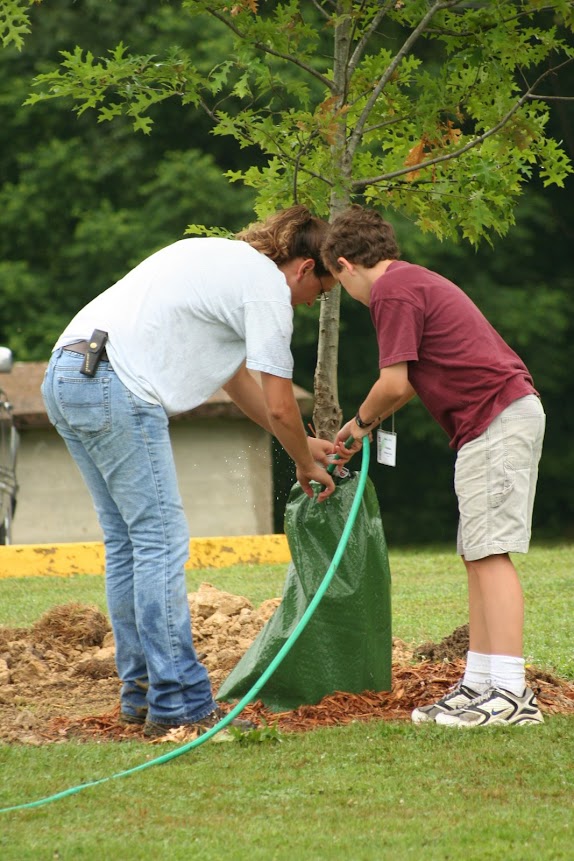|
View videos and follow us on... |    | |
|
|
 State & Private Forestry News State & Private Forestry NewsApril 30, 2012 |
|
Emerald Ash Borer Crosses Hudson River  David Cappaert, Michigan State University, Bugwood.org DURHAM, N.H.--A tree-killing invasive insect recently crossed its last major natural eastward obstacle, the Hudson River in New York, and is now poised to reach New England woodlands. Forest health managers on scene near the east side of the river detected a possible emerald ash borer (EAB) infestation there March 8. The Animal and Plant Health Inspection Service (APHIS) confirmed the identification of the insect specimens as EAB the next day. Though concerned about the latest detection, officials are relieved that the infestation appears to be isolated. Read more. |
|
Lyme Disease Surge Predicted for Northeastern United States
ScienceDaily (Mar. 16, 2012)--The Northeast should prepare for a surge in Lyme disease this spring. And we can blame fluctuations in acorns and mouse populations, not the mild winter. So reports Dr. Richard S. Ostfeld, a disease ecologist at the Cary Institute of Ecosystem Studies in Millbrook, NY. Read more.
In order to transmit Lyme disease, ticks need to be attached for at least 24 hours, so check yourself (with help if needed) every night! For information about symptoms of Lyme disease visit the Web site of the Centers for Disease Control and Prevention.
Home |
Get Involved With Climate Change Adaptation in the Northwoods
ST. PAUL, Minn. (Dennis McDougall).--It was March 13, central Minnesota, and the calendar said spring was still a week away. But the warm weather, sunshine, birds singing, and buds bursting on the trees suggested it was already spring. So it was with a twinge of unease that I found myself attending "Climate Change Adaptation in the Northwoods: Information, Tools, and Collaboration," a workshop co-organized by the Forest Service's Northern Institute of Applied Climate Science (NIACS) and The Nature Conservancy, for the growing community of practice at the intersection of climate change issues and forest management. Funded in part by a Northeastern Area State and Private Forestry grant, the workshop attracted more than 80 attendees who represented a cross-section of the forestry community from the three-state area of Minnesota, Wisconsin, and Michigan. Thought-provoking workshop sessions showcased on-going adaptation projects, providing information on useful tools for land managers and on lessons learned from attempts at applying partnerships and collaboration to the challenge of climate change. According to organizers, mobilizing a variety of perspectives and forest management approaches will be necessary to achieve an "all lands" response to climate change across the Northwoods. Workshops like this one help to build a foundation of shared information and working relationships. While it was hard not to enjoy the warm weather, the unseasonable temperatures seemed to underscore the seriousness of the messages delivered at the workshop. Climate change-it seems-is at hand, and now is the time to begin preparing for the future. Please contact NIACS to learn more about the Northwoods workshop or to get involved with climate change adaptation in the region.
Home |
Third Landscape Stewardship Webinar on May 1st
NEWTOWN SQUARE, Pa.--The topic of the third Landscape Stewardship Webinar will be "A Partnership Approach to Forest Land Conservation in Kennebec County, Maine." The Kennebec Woodland Partnership was launched in 2009 to help landowners make informed decisions about their woodlands and to ensure a sustainable future for the county's forests. The Partnership was formed out of common interests and an awareness that Kennebec County's local economy, wood products markets, recreational opportunities, wildlife habitat, water quality, and quality of life all depend largely on the county's approximately 374,000 acres of woodland.
Join this U.S. Forest Service Webinar to learn about the Kennebec Woodland Partnership's successes and challenges:
* How did this partnership form, and how do they keep attracting partners?
* What are some of the tools, strategies, and projects that they use to achieve their goals?
* How do they remain effective on a landscape scale and meet the State's forest action plan?
More information about the Webinar.
Home |
Right Tree, Right Place
NEWTOWN SQUARE, Pa.--Now that Arbor Day has kicked off the planting season, when you get ready to plant a tree, make sure you consider tree characteristics and site conditions. Let questions from the Arbor Day Foundation's Web site guide you to planting the right tree in the right place. Home

Chuck Reger, U.S. Forest Service |
|
Forest Legacy Project Receives Habitat Management and Partnership Award
MADISON, Wis.--A Forest Legacy Project in Wisconsin received the Habitat Management and Partnership Award from Wings Across the Americas, during the North American Wildlife and Natural Resources Conference held in Atlanta, GA, on March 14, 2012. U.S. Forest Service award recipients were Deirdre Raimo, Neal Bungard, and Scott Stewart. The award recognizes an innovative partnership between the Forest Service, Northeastern Area State and Private Forestry; Wisconsin Department of Natural Resources Bureau of Forestry; the non-profit organization, Trust for Public Land; and Plum Creek Timber Corporation. Read more. |
|
Chesapeake Bay Report: 650,000 Acres Conserved
MORGANTOWN, W.Va.--A new report from USDA's Natural Resources Conservation Service (NRCS) shows that with NRCS assistance; Chesapeake Bay region farmers, forestland owners, and other partners put conservation practices on 650,000 acres of working land between May 2010 and September 2011. That amount of acres nearly equals the land area of the state of Rhode Island. Read more.
Home |
|
|
|
|